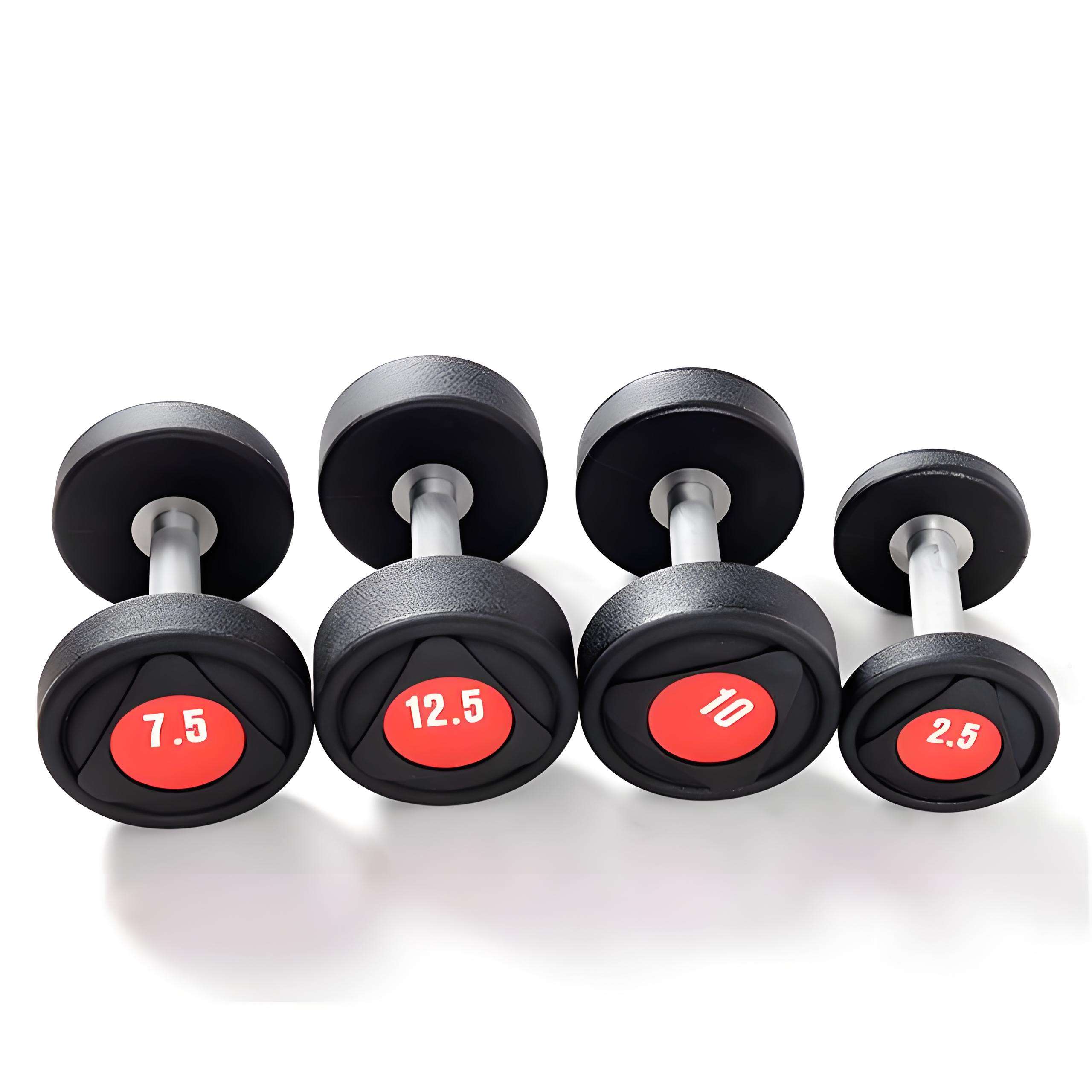PU COATED DUMBBELL XDB408
Its name derives from the polyurethane material applied in its outer coating, which enhances durability and provides a comfortable grip.

Item Code: XDB408
Weight Range: 2.5/5.0/7.8/10/12.5/15/17.5/20/22.5/25/27.5/30/32.5/35/37.5/40 KGS
Material: PU+ Iron
Colors: BLACK + RED
Advantage:
High-Density Polyurethane Coating:
The outer layer is made of polyurethane (PU), a high-density, wear-resistant, and eco-friendly material that protects the inner cast iron core from corrosion and reduces noise during use.
Eco-Friendly & Odorless:
Free from toxic chemicals or strong rubber smells, ensuring a safe indoor environment.
Long-lasting material reduces waste compared to low-quality alternatives.
Ergonomic Safety
One-piece construction eliminates loose parts, reducing the risk of accidents during dynamic exercises.
Rounded edges and smooth surfaces prevent skin abrasions or bruises.
Functions:
Broad weight range (1–30+ kg) suits beginners to advanced users for strength training, HIIT, or rehabilitation.
Durability:
Resistant to scratches, drops, and environmental factors.
| 2 LBS | Rehabilitation |
| 3 LBS | Novice female trainees with limited strength |
| 5 LBS | Novice female trainees with good strength |
| 8 LBS | Female trainees who work out regularly |
| 10 LBS |
Female trainees who want more strength |
| 12 LBS | Professional female trainees |
| 15 LBS | Professional male trainees |
| 20 LBS | Professional male trainees |
A Brief History of Dumbbells
The dumbbell, a cornerstone of strength training, traces its origins to ancient civilizations. Early prototypes emerged in India (around 1000 BCE) with stone or sand-filled devices called "nals", used for building warrior strength. Ancient Greeks later adopted halteres – crescent-shaped stone weights – for athletic training and to enhance long jumps in the Olympic Games.
During the Middle Ages, European knights used weighted wooden clubs for combat preparation. The term "dumbbell" itself appeared in 16th-century England, referring to silent church bell ropes repurposed for resistance exercises (hence "dumb" bells).
The Industrial Revolution revolutionized dumbbell design:
18th century: Cast-iron adjustable plates were introduced.
19th century: Standardized weights emerged, popularized by strongmen like Eugen Sandow.
20th century: Rubber-coated dumbbells reduced noise, while hexagonal designs prevented rolling.
Modern innovations include adjustable selectorized dumbbells (e.g., Bowflex) and smart dumbbells with app-connected tracking (2020s). From stone to AI, dumbbells remain a timeless tool for human physical empowerment.

